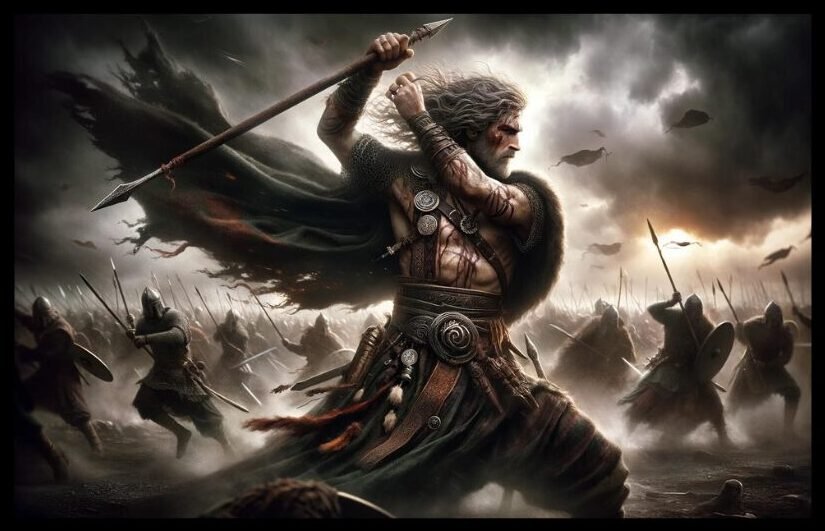The duel that led to Cuchulain’s death involved multiple participants and treachery. Cuchulain faced Lugaid mac Con Roí, son of Cú Roí mac Dáire, and three other warriors. Ambushing him together, each wielded spears cursed by a druid. The first warrior wounded Cuchulain, piercing his abdomen, but he continued to fight. Lugaid then struck the fatal blow, hitting Cuchulain in the chest.
Mortally wounded, Cuchulain tied himself to a standing stone to die on his feet, facing his enemies. Lugaid, wary of a final act of vengeance, refused to approach him. Only when the Morrigan, in the form of a raven, landed on Cuchulain’s shoulder to signal his death did Lugaid dare to advance. His enemies then decapitated him, taking his head as a trophy and fulfilling their quest for vengeance.

